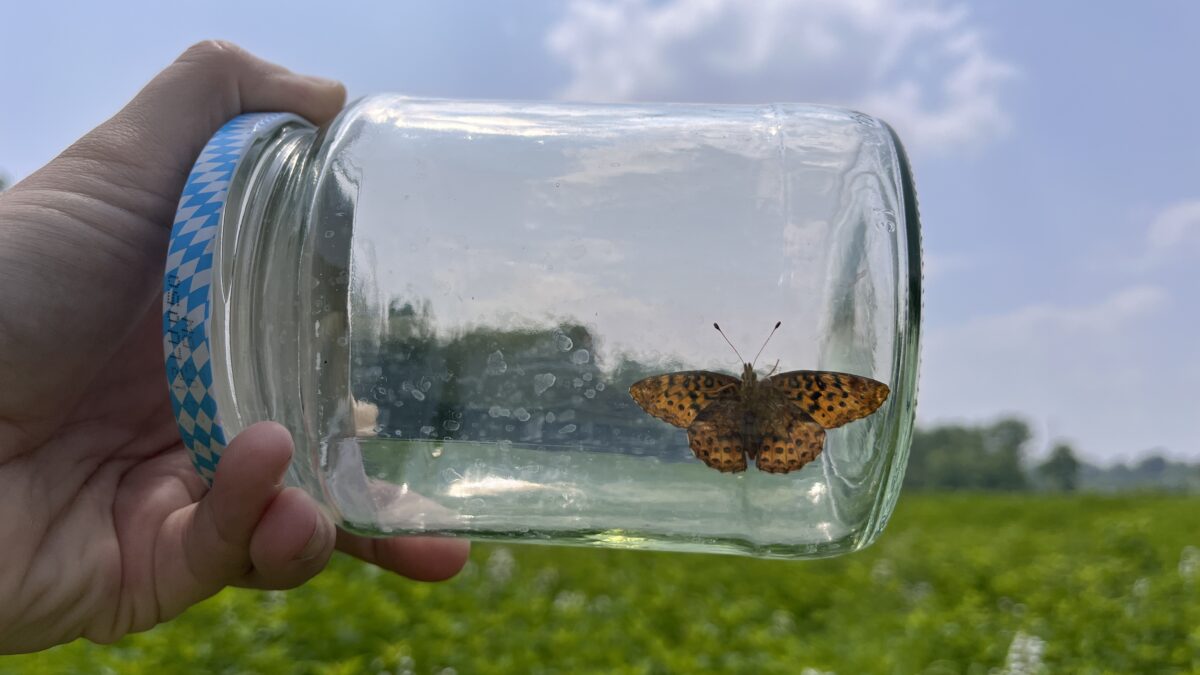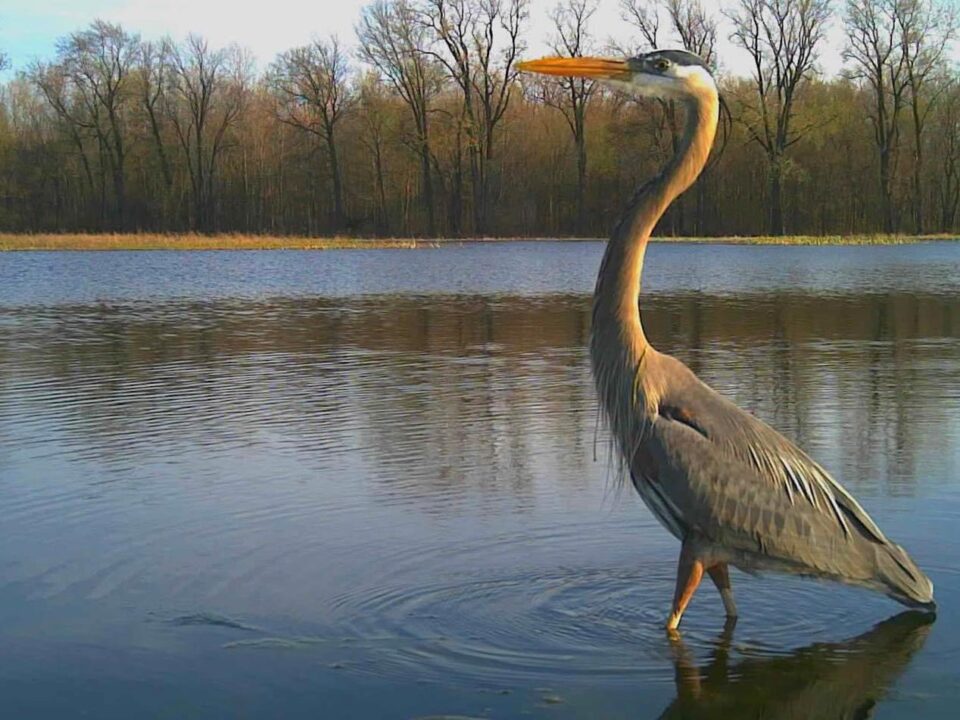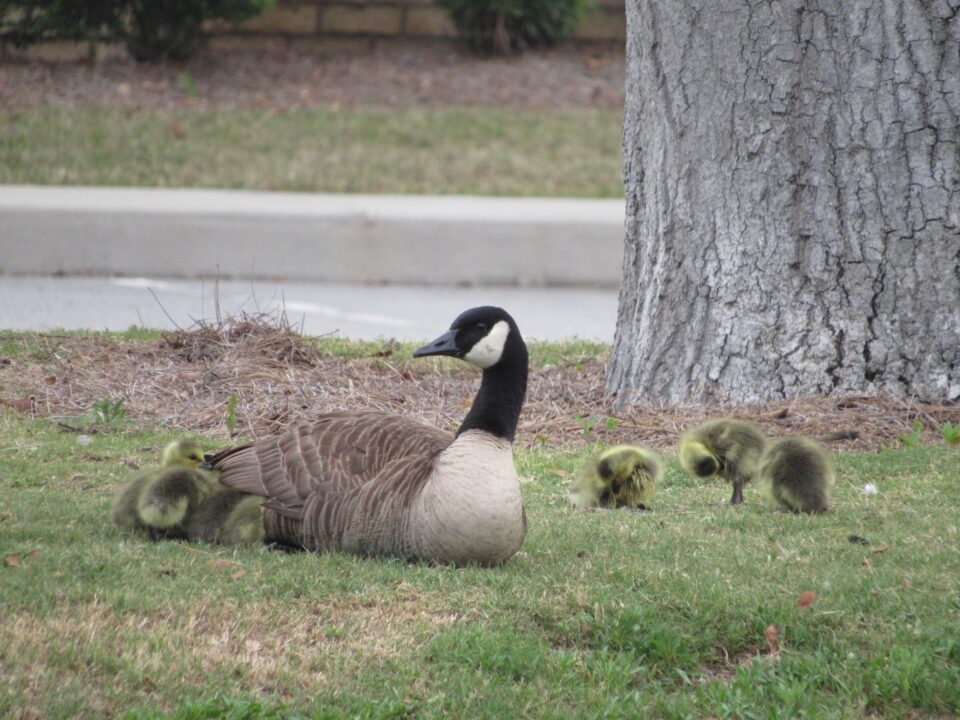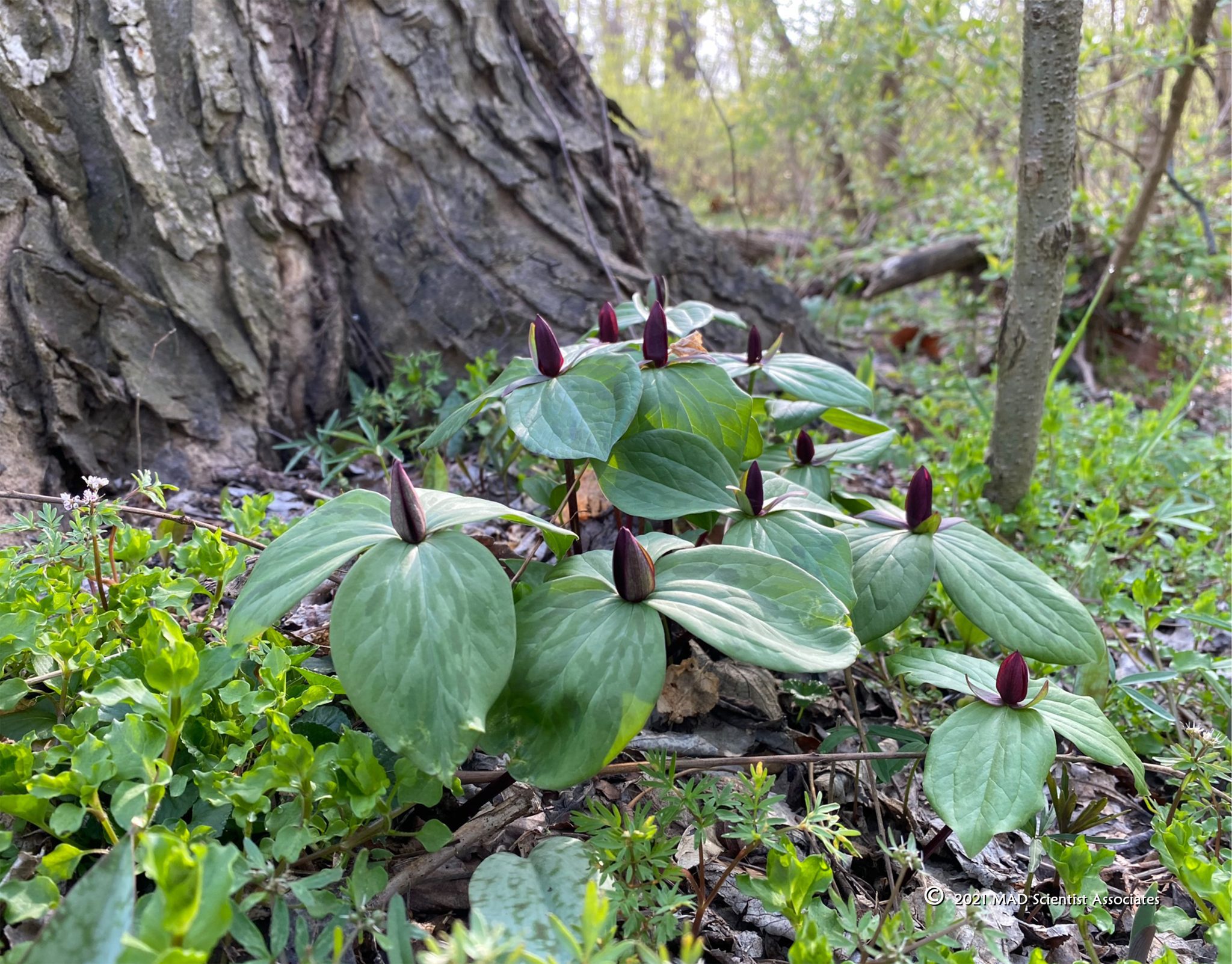
Floristic Quality Assessments
January 11, 2024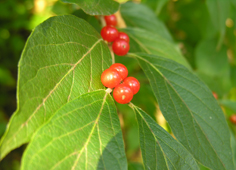
Invasive Species Awareness Week- Bush Honeysuckle
February 26, 2024By: Jenny Adkins
January 16, 2024

Calico pennant dragonfly in young backyard prairie
Something we love about our career is that, in the field of ecology (and all sciences for that matter), there’s always something to learn. When you think of discovery, it may conjure grandiose scenes of trekking deep into new environments, suffering through grueling weather, being bombarded by unfamiliar insects, etc., but we’re willing to bet that there are many things you can discover right outside your door…without the travel bill. Just the practice of looking upon the world with fresh eyes can be life-changing. Once you start looking, you’ll almost always see something new each time you peruse a new flower in bloom, the soil under a rock, the trunk of a tree, etc.
The weather, season, time of day, and your personal activity can affect what you see and why. Treat your yard or local greenspace like an unexplored territory. Grab a notebook, your camera, binoculars (if you have them), a flashlight if it’s dark, and record what you see. You may be surprised at how long a list you can generate from daily observations. Be sure to make detailed notes about what you see. Sketches are great and photographs are better for referencing when using guides to identify what you found. Photographs can be easily uploaded to apps and shared with friends.
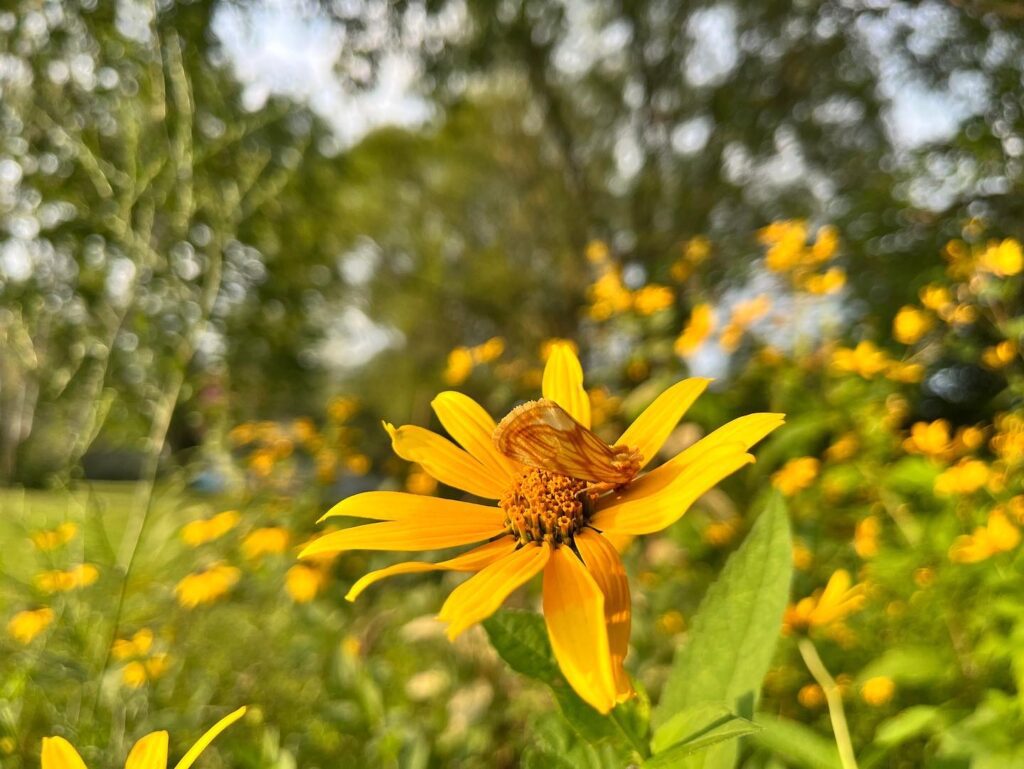
Goldenrod stowaway moth on false sunflower (Heliopsis helianthoides)
There are all types of free resources available for helping you identify what you find. Popular apps include: iNaturalist, Seek, PlantSnap, LeafSnap, PictureThis, Merlin Bird ID, BirdNet, Audubon Bird Guide, and Shroomify. Some work for all taxa, some are taxa specific. There are also lots of groups on social media platforms that allow members to post observations and request identification.
Most universities have publications or websites that have information on the natural resources relevant to their region/state. Also, organizations like Departments of Natural Resources (DNR) and the US Fish and Wildlife Service have guides and basic information available online. The Ohio DNR has printed field guides for many types of animals, plants, fungi, and lichen. You can request copies or pick up booklets at certain events. Local professionals like park naturalists, university staff, or your pals at MAD Scientist Associates can help you identify things by photographs or recorded sounds. It never hurts to ask!
Ohio Biological Survey is a great resource for scientific literature and technical information on Ohio flora and fauna. Many publications are available for purchase and are good resources for understanding the natural history of an area, and identifying specific taxa.

Moth sheet on July night
Learning about what lives near you can also help educators and researchers. Take Diane Platco-Brooks as an example- she has been making nightly observations and photographing moth species in her 12.5-acre yard for the past 10+ years and has recorded over 1,466 species of moths (amazing!). Think about that- If you had to guess how many animals you would find in your yard, would it be 5, 10, 100? She’s found over 1,000 moths alone (read more about Ohio moths here)! There’s undoubtedly thousands more insect species, and dozens of birds, mammals, amphibians, reptiles, plants, and fungi, as residents or transient visitors. The data she’s generated is incredibly valuable to researchers interested in species presence, distribution, and what impacts their populations.
If you expect to find something and don’t, do some research to find out why. Is it the wrong time of year? Do you not have the appropriate habitat? Does the animal require a specific host plant? If you can figure out what’s missing, you can enhance your yard to make the appropriate space. Things like eliminating use of pesticides, removing turf grass and replacing with a variety of native plants, leaving leaf litter and fallen logs, and adding water sources are simple ways to make your yard a safer, more inviting place for local fauna. You’ll be surprised by what comes to a single milkweed plant- it will be a LOT more than just monarch caterpillars!
We hope you’re inspired to explore and discover what lives near you. We’d love to hear about what you find!
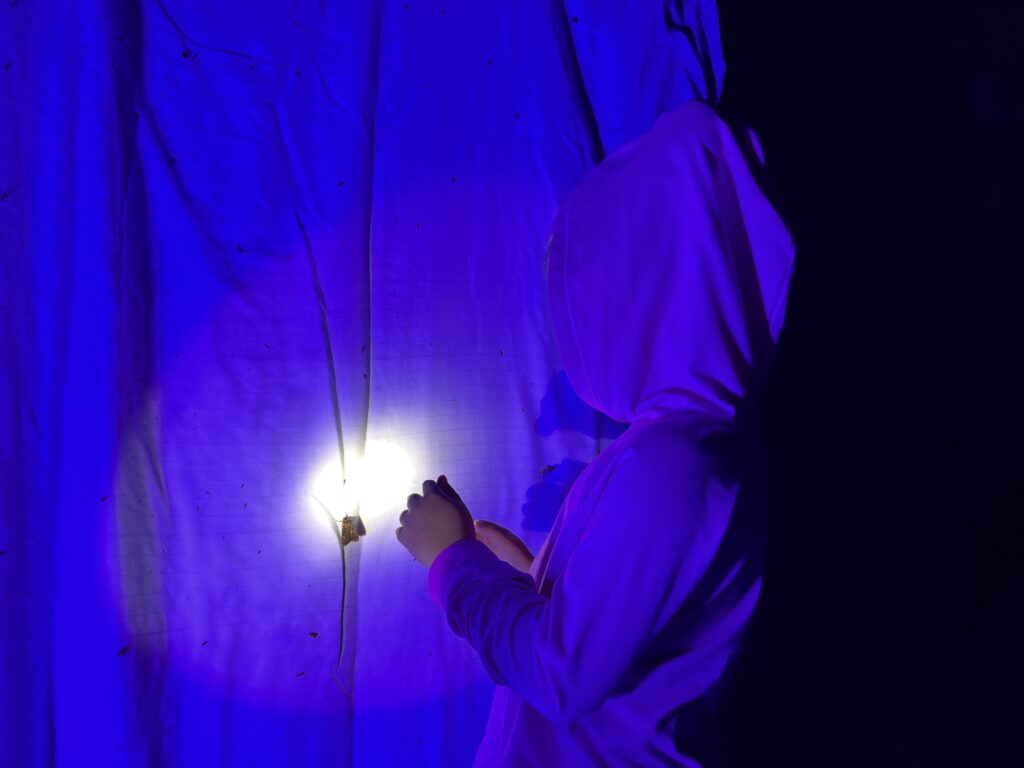
Backyard mothing sheet exploration



